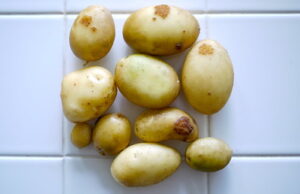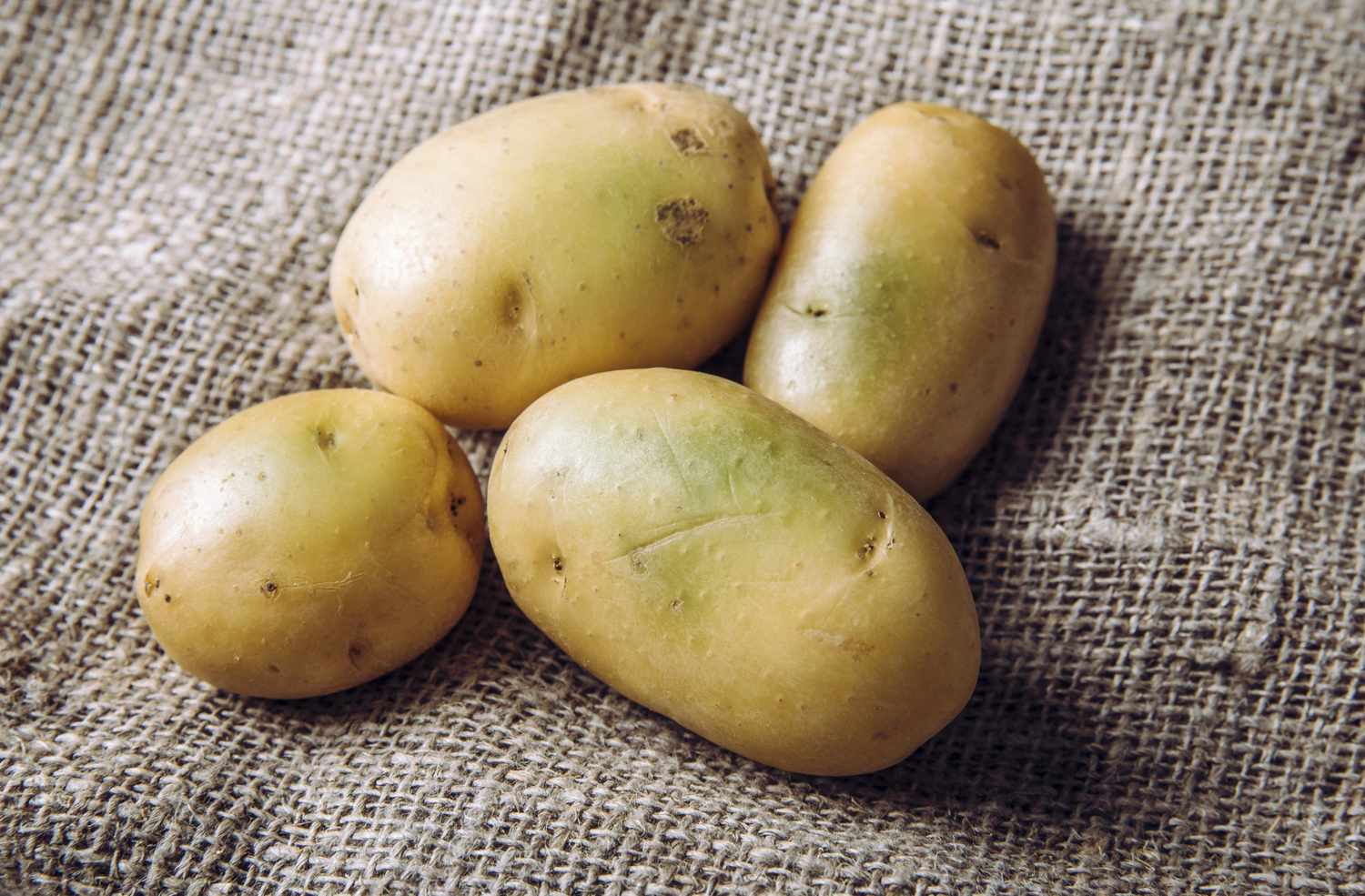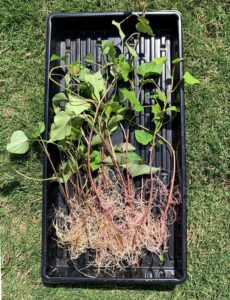On occasion, you may come across a potato or a sweet potato whose flesh or skin has a green tint. What causes the abnormal color, and is the potato safe to eat? We’ll answer these questions and more in this helpful article.
What Causes Potatoes to Turn Green?
Potatoes, also called tubers, are root vegetables that grow beneath the soil and, as such, are not exposed to the light. However, if you’ve ever grown potatoes, you know that sometimes a portion of the potato may push up through the soil where it is exposed to sunlight. The exposure to light, even artificial light, causes the potato to produce chlorophyll, the pigment that gives plants and algae their green color. As a result, the potato skin and possibly the flesh will likewise develop a greenish tint.

In addition to chlorophyll, exposure to light can also cause the potato to produce a glycoalkaloid compound called solanine. While the compound is a part of the plant’s natural protection against insects and diseases, solanine is also toxic to humans. The bitter tasting compound can irritate the digestive system if consumed.
This article contains affiliate links. If you make a purchase using one of these links, I will receive a very small commission at no additional cost to you, and it will help me maintain this website. Rest assured, I only recommend products I actually like!
Can You Eat Green Potatoes?
While chlorophyll is harmless, the green tint it produces can signal that the potato has been exposed to light and, therefore, toxic solanine may also be present.
If you find that the skin or flesh of a potato has a green tint, it may still be edible. If there are only a few green spots or “eyes,” peel the skin and cut off the affected spots. However, if there are more than just a few, it is advisable to discard the entire potato.

Properly cooking a potato can also help reduce solanine levels. However, a potato can contain solanine even if it does not look green. Therefore, if, once cooked, there is a bitter taste or if eating it causes a burning sensation in the mouth or throat, discard the potato as it may contain the toxic compound.
Common symptoms associated with solanine ingestion include nausea, abdominal cramps, vomiting, diarrhea, fever, sweating, and headache. Symptoms may be more prominent in children than in adults since they have a lower body mass. For this reason, some recommend not allowing children to eat any potato that has a green tint, even if the affected parts have been removed.
How to Prevent Potatoes From Turning Green
In the Garden
If you are growing potatoes or sweet potatoes in your garden, keep an eye out for any potato that breaks through the soil’s surface. If discovered, cover the potato over with soil as soon as possible.
When harvesting potatoes, inspect each one for any sign of green skin and discard, or if only a spot or two is present, you can consider whether you want to consume the potato after the affected areas have been removed.
Store -Bought Potatoes
Commercial growers are usually very careful about removing any green potatoes from their harvest before delivering them to grocery stores. However, a green potato may escape their notice. If you come across one, notify the produce manager at the store. Or, if you find one in a sack of potatoes you purchased, you may just want to toss it.
 Storage
Storage
Proper storage of potatoes can also prevent solanine from developing. Store potatoes in a cool, dark place. A root cellar, basement, or dark pantry can be ideal if there is good air circulation. Avoid storing any kind of potatoes in the refrigerator.
Can You Compost Green Potatoes?
Even though potatoes with solanine are not always safe to consume, rest assured that you can safely compost them. Note that it will speed up the composting process if you cut them into smaller pieces first.
Thank you for reading this article! If you found it interesting or helpful, please consider sharing it with others via email and social media!



